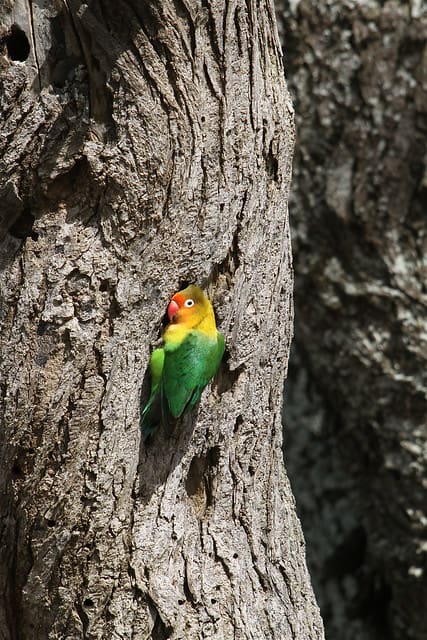Leading Fischer’s Lovebird Research
Fischer’s Lovebird (Agapornis fischeri) has been heavily trafficked: from the 1980s to the 1990s over 500,000 individuals were trapped for the wild bird trade. Hybridisation with Masked Lovebirds may be of concern, and the loss of nesting and foraging habitat is ongoing.
Beginning in 2021, WPT-led research is uncovering Fischer’s Lovebird ecology and the effects of human-wildlife conflict. The priorities for their conservation are surveying populations in Tanzania, a first in over 30 years, assessing conservation measures, trade and environmental change effects, completing genetic sampling and testing, which will determine the extent of hybridisation between Fischer’s and Masked Lovebirds, investigating and mitigating local persecution of Fischer’s and examining the gaps in current lovebird data.
Status: IUCN Near Threatened / CITES Appendix II
Population: As few as 290,000 individuals.
Range: Occurs in NC Tanzania, reaching E Rwanda and Burundi as an occasional visitor. Introduced to Tanga and Dar es Salaam, coastal Tanzania and at Mombasa, Nairobi, Athi River, Naivasha, and Isiolo, Kenya.
Natural history: These lovebirds are found from 1100 to 2200 m (3608-7216 ft) in wooded grasslands with Acacia and Commiphora trees, savanna and more open grasslands. They are also seen in agricultural areas and found in riverine woodland during the dry season. They eat grass seed, millet and maize, as well as seeds of Acacia, fallen berries and fruits. Fischers’ are often found near water in small groups outside the breeding season, and where food is abundant will gather in more substantial flocks. Roosts in Rufous-tailed Weaver nests. Breeding is from January to July; uses a nest cavity in dead trees, also sometimes in cliffs.

